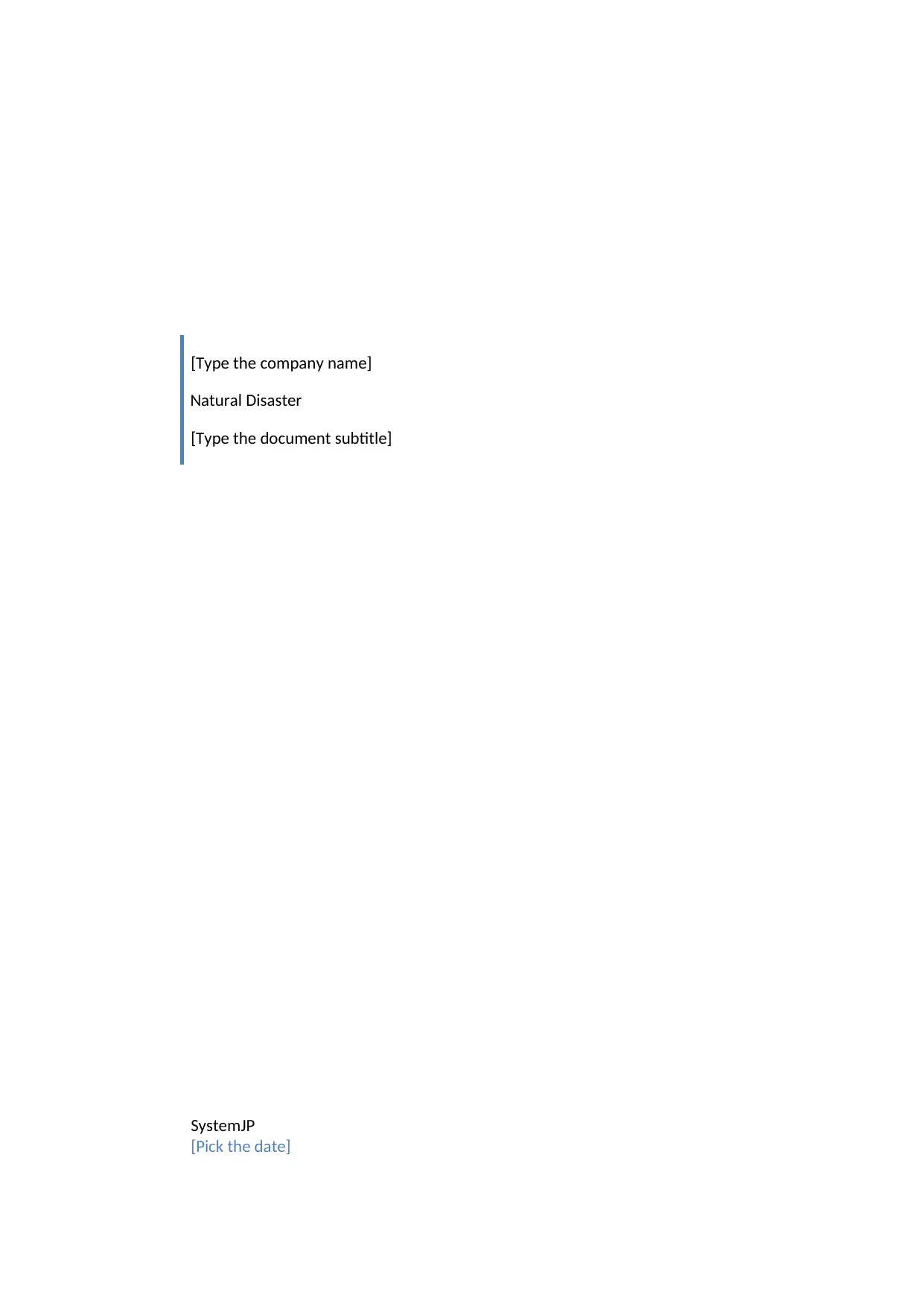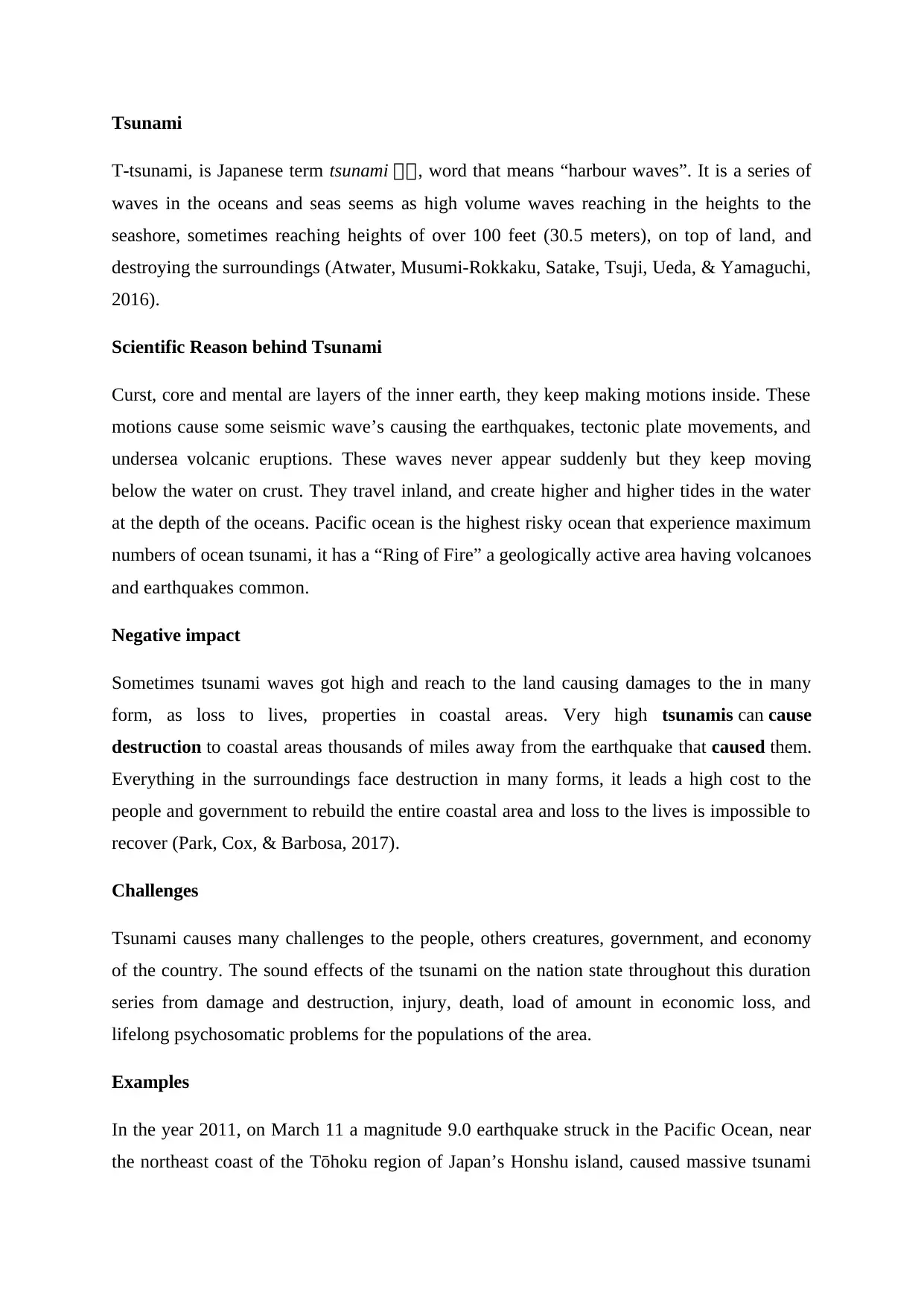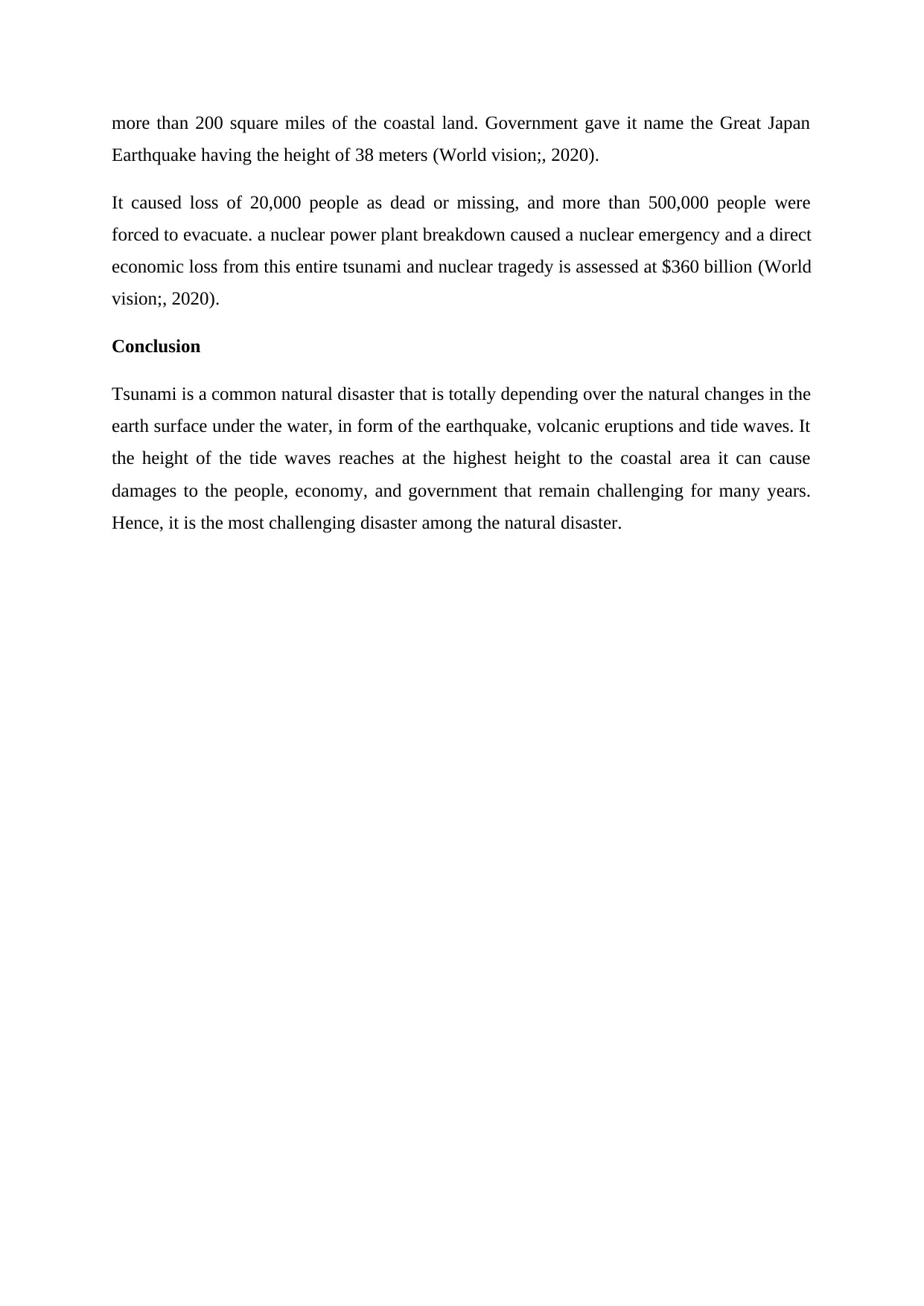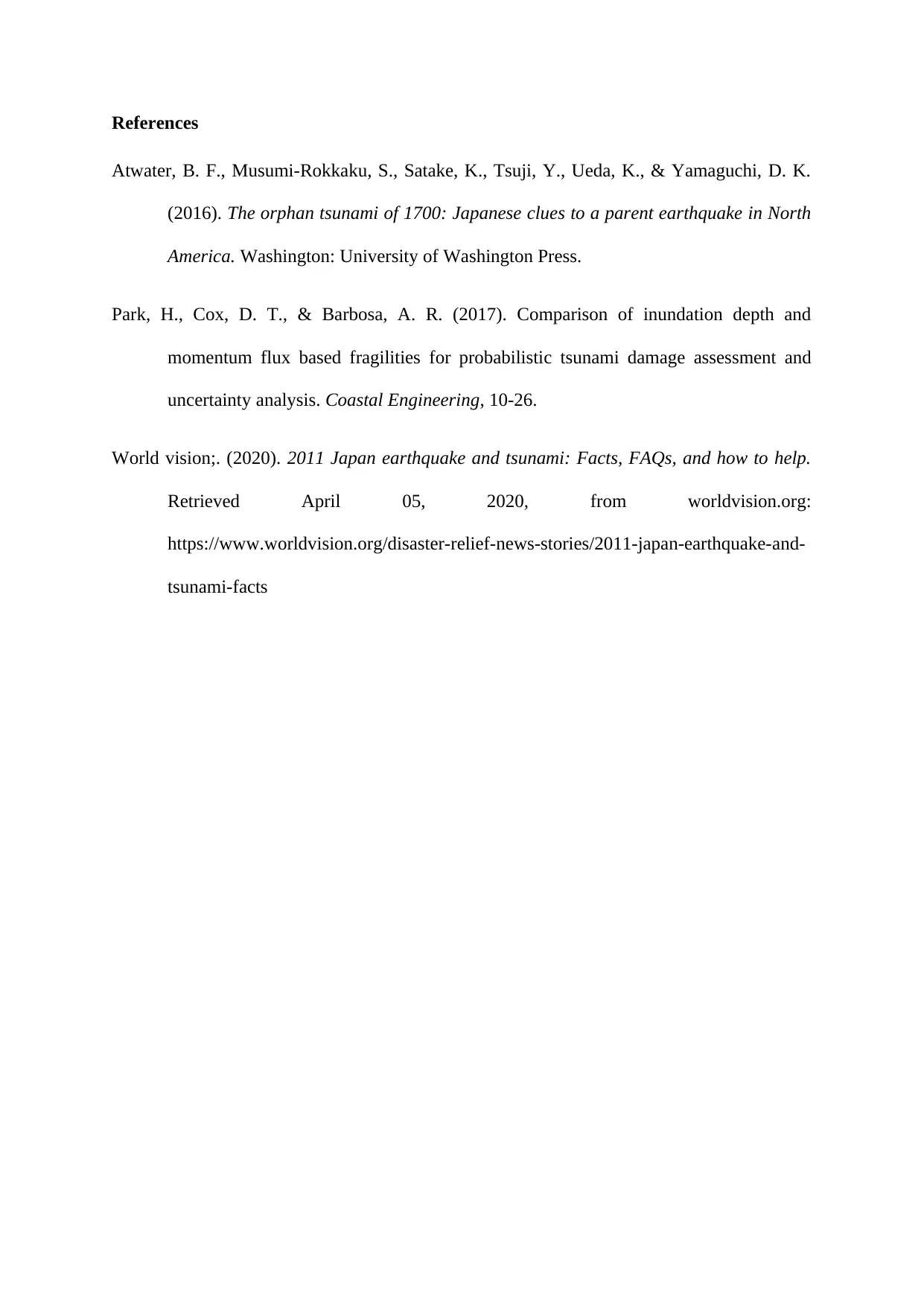Natural Disaster Analysis: The 2011 Tsunami in Japan - Report
VerifiedAdded on 2022/09/14
|4
|705
|10
Report
AI Summary
This report examines the phenomenon of tsunamis, defining them as a series of high-volume waves that can reach significant heights and cause extensive destruction to coastal areas. It delves into the scientific reasons behind tsunamis, including the role of seismic waves from tectonic plate movements and undersea volcanic eruptions, with the Pacific Ocean being highlighted as a high-risk zone. The report discusses the negative impacts of tsunamis, such as loss of life, property damage, and economic consequences. It provides the 2011 Japan tsunami as a key example, detailing the magnitude 9.0 earthquake, the resulting tsunami, the significant loss of life, and the substantial economic losses. The report concludes by emphasizing the challenges posed by tsunamis and their dependence on natural changes in the earth's surface. The references provided offer further insight into the topic.
1 out of 4











![[object Object]](/_next/static/media/star-bottom.7253800d.svg)